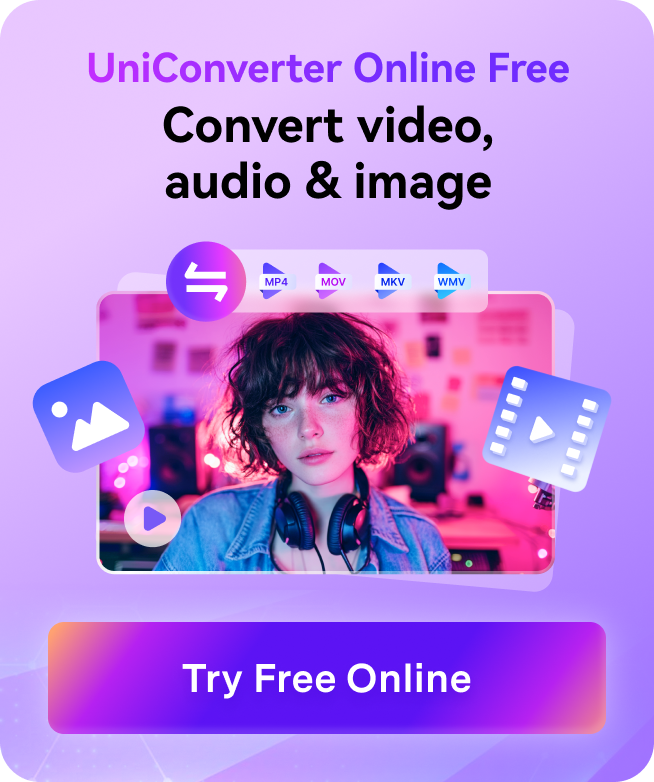Exploring Sora AI: Understanding, Usage, and Accessibility
The world of artificial intelligence is rapidly evolving, and one groundbreaking advancement is Sora AI. This generative model developed by OpenAI possesses the remarkable ability to transform mere text descriptions into captivating video scenes. But what exactly is Sora AI, and how can it be harnessed?
This article discusses the inner workings of Sora, explaining how it interprets prompts, the creative possibilities it unlocks, and the ongoing efforts to make this technology widely available. As a bonus tip, discover an effortless way to enhance your AI-generated videos in one click.
In this article
Part 1: What is Sora AI?
Recent developments have seen a rise in AI-driven tools in almost all aspects of everyday life. The latest tool that has spread like wildfire in the world even before its release is Sora AI. But what is Sora, and why is it gaining so much popularity?
Sora is a powerful AI-powered tool designed to convert text prompts into compelling videos. It is an innovative text-to-video AI model launched by OpenAI, the same company that has developed ChatGPT. The name “Sora” is inspired by the Japanese word for sky, hinting at the “limitless creative potential” the tool aims to provide.
Sora’s first preview was on February 15th, 2024. This was when OpenAI released several high-resolution clips generated by the platform. The main goal behind Sora’s development is to make AI understand and simulate the natural world in motion by converting ideas into dynamic visuals.

Part 2: How Does Sora AI Work?
Sora is an AI-based model, which means that it uses machine learning and neural networks to perform tasks. From a user perspective, the work behind Sora is simple. You provide a written prompt describing the video you want. Sora then uses its understanding of language and the physical world to generate a short video that matches the description. But the real magic is happening behind the normal eye.
OpenAI trained Sora on both videos and images. This likely helps it understand the relationships between static pictures and moving scenes. The media used for training was of different lengths, resolutions, and aspect ratios. This makes Sora AI adaptable to various video formats. Currently, Sora can make realistic videos that are up to one minute long.
Imagine a jumbled mess of colors and shapes. Sora starts with this "noise" and gradually removes it, step by step, using a unique AI technique called a "diffusion model." Consequently, it eliminates the noise from tiny 3D chunks of the video, not a whole image, using transformation models.
Once the video is built in a unique code format, it's translated into a regular format you can watch on your screen. To train Sora even better, they use another AI tool to describe videos with words. This "video-to-text model" creates detailed captions, giving Sora more information to learn from.
Part 3: How to Use Sora AI?
If you wish to know how to use Sora AI, you will have to wait until it is officially released. As of yet, the tool is still under development by OpenAI, where they are prioritizing responsible usage. However, based on what we know about similar AI models, you may be able to use Sora AI using text and image prompts.
The core of using Sora would likely involve writing a clear and detailed text description of the video you want to create. Once you've crafted your perfect prompt, you'll likely submit it through an interface provided by OpenAI. This might be a web application or an API. Sora would then take your prompt and create a short video based on your specifications.
Part 4: Is Sora AI Available to the Public?
Unfortunately, Sora AI is currently not available to the public. OpenAI only provided access to a small team of professional artists, filmmakers, and red teamers to test the model. The company has stated its goals of making the platform publicly available. But they did not specify when they plan to do this, only that it will be soon. You will have to wait a little longer if you want to use Sora AI.
Part 5: How to Access Sora?
To learn how to get access to Sora OpenAI, the best resource is Sora AI’s website. You can open it on any web browser to access information about Sora and release updates. You can also scroll down on the site until you reach the “Capabilities” section. Here, you can find video samples Sora has created and examples of text prompts you may use.

Part 6: Pros and Cons of Sora Video
Although Sora AI is a revolutionary technology, specific risks and benefits are still associated with its use. Here is a closer look at some advantages and disadvantages you can receive by generating videos using Sora AI:
Pros
- Increased Efficiency: Sora helps you skip all the steps of traditional video production, saving you both time and resources. You can forget about fancy cameras or long editing sessions. Just write down what you want in your video, and Sora will provide exceptional results.
- Enhanced Creativity: AI often works like a magic toolbox for creators. Sora AI can let users try out their crazy ideas for videos, opening the door to all sorts of extraordinary possibilities. You can add special effects you wouldn’t usually be able to or tell your stories differently.
- Scalability: AI videos can churn out videos in a bunch, which can help if you need lots of videos fast. Tools like Sora can help businesses and creators who need to keep making stuff all the time. It can also be adapted by people with disabilities, making content accessible on a large scale.
- Consistency: No matter how many videos you make with Sora, they'll all have that same polished look and feel. This helps keep your brand image consistent and makes your content strategy nice and smooth. You can maintain a consistent level of quality and style throughout.
Cons
- Limited Availability: Sora is not currently available to the public. It is also yet unclear when or how it will be released. This poses a significant concern for its accessibility and uses.
- Ethical Concerns: Super realistic videos are fantastic, but there's a catch. Someone could use this technology to make fake videos of people saying or doing things they never did.
- Technical Limitations: While Sora is impressive, it's still learning. Videos might be a bit short, or some fancy details might be tricky to handle.
- Dependency on Technology: If you depend heavily on AI, it can stifle creativity in the long run. If something goes wrong with the technology, you might be left without a video.
Part 7: Using Wondershare UniConverter to Enhance Sora-Generated Videos
Although AI tools like Sora can help you generate videos, they may still be lacking in several aspects. A serious concern that AI-generated videos have is low resolution. If you want a reliable way to enhance your Sora AI videos, you can try Wondershare UniConverter. This video toolbox has been offering groundbreaking tools for enhancing your media content for over a decade.
It provides a range of useful features designed to bring the best out of your videos. The AI Video Enhancer tool offered by UniConverter is a dual-AI model for top-quality video enhancement. It provides one-click denoising, leaving you with improved video resolution. This tool also has frame interpolation technology to boost video frame rates without compromising the quality of your content.
Top Features of Wondershare UniConverter
- Vocal Remover: UniConverter has a useful Vocal Remover feature to help you separate music and lyrics from your audio files. You can use the results for karaoke or music lessons.
- AI Script Generator: If you wish to transform your ideas into engaging scripts, UniConverter is the correct answer. It offers powerful AI tools to help you write compelling scripts from text prompts.
- Voice Changer: This AI video enhancer offers diverse sound effects to apply to your voice. You can hide your gender or pull a prank in one click using this feature.
- Smart Trim: If your video contains unwanted segments you wish to remove, UniConverter has got you covered. Its Smart Trim feature can delete silent parts or specific people from your videos.
How to Enhance Videos with AI Using Wondershare UniConverter
UniConverter’s AI-powered Video Enhancer function offers an easy way for users to improve their video resolution. It can help you save time and the effort of manually rerecording everything from scratch. Here is a quick guide on how to enhance videos using Wondershare UniConverter:
Step 1 Launch UniConverter’s AI Video Enhancer
You will first need to install UniConverter on your Windows or Mac device. Once you launch the program, you will be taken to its main interface. Here, go to the “Tools” tab from the left and scroll down to locate the “AI Video Enhancer” feature under the “AI Lab” section.

Step 2 Insert the Grainy Video for Enhancement
Once the AI Video Enhancer window appears on the screen, use the “+ Add File” icon to insert the blurry or grainy videos you wish to enhance using AI.

Step 3 Enhance and Save Output Video
UniConverter will now offer two options to enhance your video, as evidenced by the right panel. You can use the “General Denoise Model” to remove any grain from your video. If you want a more fluid motion in the video, you can choose the “Frame Interpolation Model.” Hit the “Export” button to save your enhanced video to a location of your choice.

Conclusion
Sora AI’s powerful text-to-video model has the potential to unlock a new era of content creation. Users can generate captivating video scenes with mere words, making long processes a breeze. While currently under development, Sora's potential impact in video creation is undeniable. Once you create a video using Sora AI, remember to use Wondershare UniConverter to enhance your content.


